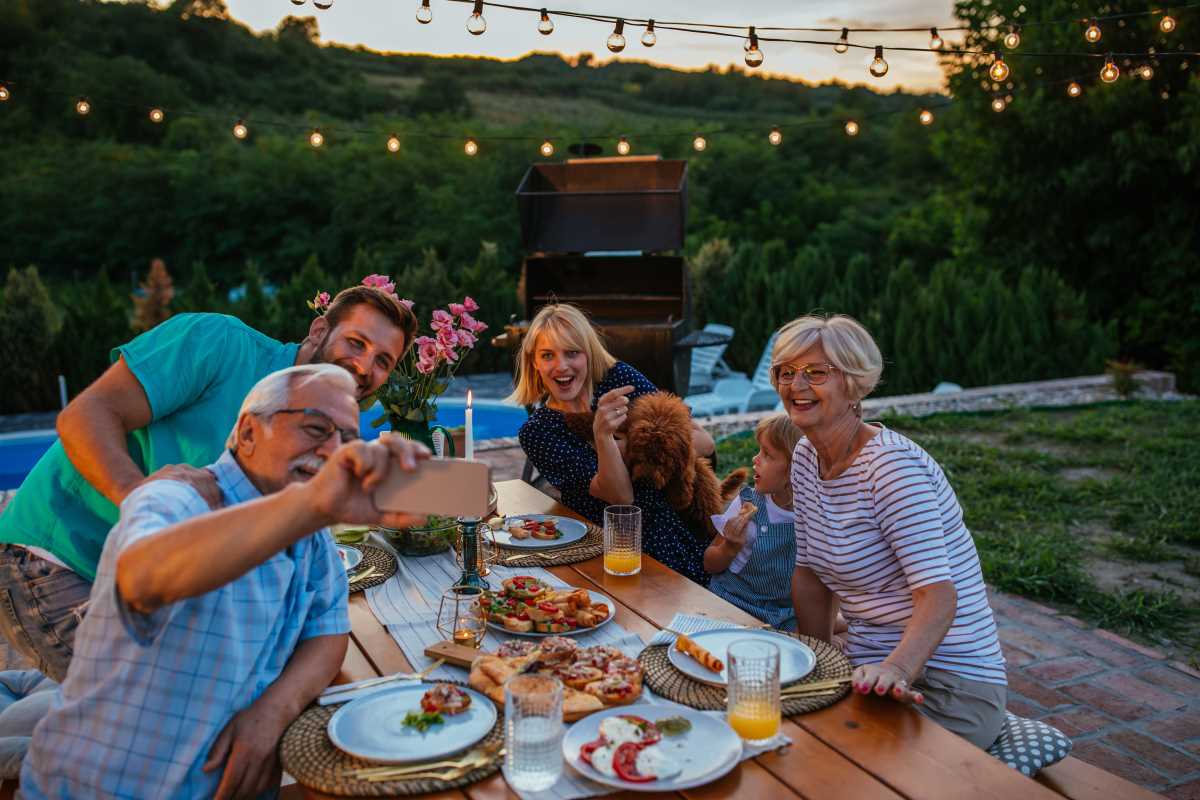Hosting a large family gathering at home can be... overwhelming. Whether it’s a holiday dinner or a long-overdue family reunion, bringing everyone together under one roof is no small task. Between cooking and ensuring the kids are entertained, it can feel like you’re hosting a circus. And as much as we all love our extended families, the potential for disagreements is real
But here’s the good news: with a little preparation, some teamwork, and the right mindset, you can pull off a fun, meaningful gathering without losing your mind. Family time should be about enjoying each other’s company, not stressing over the details. Here are some practical tips to help you turn your next big gathering into a stress-free (and hopefully drama-free) success.
1. Plan Ahead
Preparation is key when managing a large group of people in your home. Start by setting a date and getting an approximate headcount as early as possible. Once you know how many people will be coming, make a detailed to-do list. This can include everything from planning the menu and seating arrangements to organizing entertainment options and cleaning the house.
However, while planning is essential, it’s equally important to stay flexible. Family gatherings rarely go exactly as planned, and that’s okay. There might be an unexpected guest, a delayed dish, or a kid who naps right through the scheduled meal time. Give yourself permission to roll with the punches and adjust as needed.
2. Keep the Menu Simple
Cooking for a crowd can be stressful, but it doesn’t have to be. Stick to dishes you’re comfortable making and that don’t require you to stand in the kitchen all day. Casseroles, slow-cooker meals, and buffet-style options like tacos or baked ziti are easy to prepare and serve. Pair these with simple sides like salads, bread, or roasted veggies to round out the meal.
If you want to reduce your workload even more, consider making it a potluck-style event. Ask family members to bring their favorite dish or dessert. It not only eases the cooking burden but also adds variety to the table. And don’t forget to give yourself grace if needed—store-bought appetizers and desserts are totally fine!
3. Set Up a Kid-Friendly Zone
If your gathering includes kids, keeping them entertained is a top priority. Set up a dedicated area with age-appropriate activities like toys, coloring books, or board games. For younger kids, consider a craft station or sensory play area. If the weather allows, outdoor activities like bubbles, chalk, or a simple scavenger hunt can keep them busy and out from underfoot.
Older kids might enjoy a movie night corner with beanbags or even a small competitive video game setup. Keeping kids engaged not only ensures they’ll have fun, but it also gives parents a chance to relax and socialize.
4. Delegate Tasks
You do not have to do it all! Hosting a large gathering works best when responsibilities are shared. Get family members involved by assigning tasks based on their strengths. Have one person bring their signature casserole, another manage the grill, and someone else take charge of drinks. Older kids can help set the table or corral younger ones, while grandparents might enjoy organizing games or reading stories to the little ones.
Delegating shows your guests that you trust and value their help. Plus, it gives everyone a sense of ownership over the event, making it a true family affair.
5. Strategize Seating Arrangements
Who sits where may not seem like a big deal, but a little planning can go a long way in keeping the peace. If certain family members don’t get along, consider seating them apart. Place kids at their own small table so they can enjoy being with their cousins (and avoid adult conversations they may not find interesting).
Mixing different sides of the family can also encourage mingling. For instance, seat grandparents with teens or mix in-laws with cousins they may not see as often. This thoughtful approach helps foster bonding and reduces cliquish behavior.
6. Create a Relaxed Atmosphere
Family gatherings don’t need to be flawless to be enjoyable. Perfectly polished decor and spotless floors aren’t what people will remember. Instead, focus on creating a warm and welcoming environment. Light a few candles, put on some soft background music, and keep the table settings simple. These little touches can make your home feel cozy and inviting without adding unnecessary work.
And if something goes wrong (a burned side dish or a minor spill), laugh it off! Remember, it’s the people—not the perfect execution—that make the day special.
7. Set Expectations Early
Avoid potential conflicts or misunderstandings by setting some ground rules ahead of time. For example, if politics or certain family disputes tend to stir the pot, kindly remind guests to steer clear of sensitive topics. If you’d like everyone to pitch in with cleanup, communicate that in advance.
You can send a group text a day or two before the event with light-hearted reminders like, “Can’t wait to see everyone! Just a heads up, this is a no-shoes-inside party, so bring your comfy socks!” Clear expectations help prevent awkward moments without feeling too formal.
8. Manage the Flow of Your Space
When a crowd of people is in your home, it’s essential to minimize bottlenecks. Spread out food and drink stations in different areas to prevent everyone from gathering in one spot (like the kitchen). If you’re lucky enough to have outdoor space, use it! Set up games, seating, or a firepit to allow guests to spread out comfortably.
9. Take Breaks for Yourself
Hosting can be exhausting, especially if you’re doing it solo. Before the gathering, carve out moments to breathe and recharge. During the event, don’t hesitate to step away for a minute to catch your breath or sip coffee quietly in the kitchen. Guests won’t mind, and you’ll feel re-energized to tackle the rest of the event.
10. Focus on the Memories
At the end of the day, it’s not about the perfect appetizers or how well the napkins match the plates. What matters most is the laughter, the storytelling, and those precious moments of connection that family gatherings create.
Take time to soak it all in. Look around at the cousins playing together, the grandparents sharing memories, and the aunts and uncles catching up. These are the things your family will remember long after the leftovers are gone.







